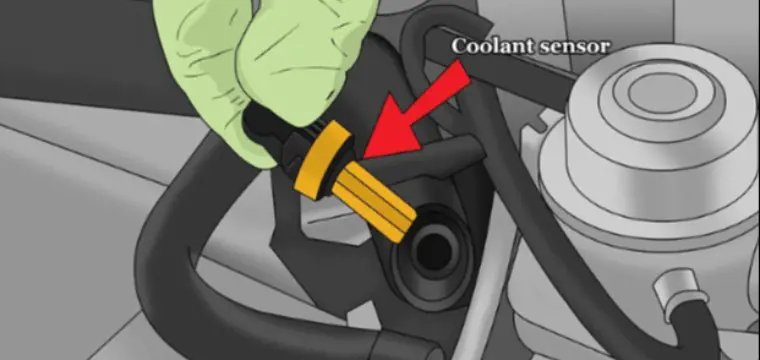Blogs

The coolant temperature sensor is a critical component of a vehicle's engine management system, responsible for monitoring the temperature of the engine coolant. Over time, these sensors can wear out or malfunction, leading to inaccurate temperature readings and potential issues with engine performance.
Mar 14, 2024
Resetting the ECT won't resolve anything. Why? Because the ECT isn't like your computer or smartphone—it's a humble resistor without any fancy computing power. Therefore, resetting it won't magically fix any malfunctions. If your ECT is on the fritz, the best course of action is to replace it.
Mar 04, 2024 More
Renowned for its exceptional capabilities, the NVIDIA V100 GPU (Graphics Processing Unit) has emerged as a game-changer, empowering researchers, scientists, and developers to push the boundaries of AI innovation.
Feb 28, 2024 More
In this article, we will explore the key differences between CMOS and BSI sensors, examining their respective strengths and weaknesses, and discussing how these factors impact image quality, low-light performance, and overall camera functionality.
Feb 18, 2024 More
-
How to Reset a Mass Air Flow Sensor
The air flow sensor, commonly referred to as the MAF (Mass Air Flow) sensor, plays a crucial role in modern automobiles. Its primary responsibility is to measure the quality of air entering the engine. Because the correct air-fuel mixture ratio (AFR) is essential for optimizing engine performance, fuel efficiency, and emission control,...
Date: Oct 17, 2023
-
Can a Bad O2 Sensor Cause a Misfire
The oxygen sensor plays a vital role in the engine control system, primarily monitoring the oxygen concentration in the exhaust gases and providing feedback to the Engine Control Unit (ECU). If you notice any symptoms of a problem or a warning light on the dashboard comes on, it is recommended that you get service and troubleshooting d...
Date: Oct 10, 2023
-
4 Wire Oxygen Sensor Wiring Diagram
The automobile oxygen sensor exhibits minimal dependency on exhaust temperature and can continue to function properly even under low load and low exhaust temperature conditions. Once the engine is started, it quickly enters closed-loop control mode, ensuring that the core component of the oxygen sensor is adequately heated to achieve p...
Date: Oct 06, 2023
-
IGBT vs GTO: Difference Between IGBT and GTO
The world of power electronics is driven by the relentless quest for efficiency, precision, and control in managing electrical energy. Two key players in this arena are the IGBT (Insulated Gate Bipolar Transistor) and the GTO (Gate Turn-Off Thyristor).
Date: Sep 26, 2023
-
Can I Use a Downstream Oxygen Sensor for Upstream
Is it possible to substitute an upstream oxygen sensor with a downstream counterpart? Although both O2 sensors serve similar purposes, unfortunately, they are not interchangeable. Indeed, the sensors differ in their threading and wiring configurations, making it imperative to exercise caution.
Date: Sep 19, 2023
-
How Many O2 Sensors Does a Car Have
Oxygen sensors not only help ensure efficient combustion in your engine, they also play a key role in emissions control and fuel economy. How many oxygen sensors are typically installed in a car? Where are they located? Let’s dive into these questions.
Date: Sep 12, 2023
-
How to Delete O2 Sensors from ECM
The O2 sensor (oxygen sensor) is one of the key components in the emission control system of modern automobiles, and its role and importance cannot be ignored. The O2 sensor mainly monitors the oxygen concentration in the exhaust gas.
Date: Sep 06, 2023
-
IGCT vs. IGBT: What Are the Difference
IGBTs and IGCTs have their own strengths and are selected based on the application. IGBTs are commonly chosen for their fast switching and efficiency, while IGCTs excel in high-voltage and high-current scenarios where controlled turn-off is critical. The choice between the two depends on factors such as voltage levels, power requiremen...
Date: Aug 29, 2023
-
IGBT Structure, Characteristics and Working Principle
Although bipolar junction transistors (BJTs) and metal oxide semiconductor field effect transistors (MOS transistors) are the most popular and widely used components, they have certain limitations in very high current applications. In this case, the insulated-gate bipolar transistor (IGBT) shows its great application potential.
Date: Aug 22, 2023
-
Application of IGBT and IGBT Application Examples
IGBT has been widely used in traditional industries such as industry, communication, computer, consumer electronics, automotive electronics, aerospace, national defense and military industry, and is also used in rail transit, new energy, smart grid, new energy vehicles and other strategic emerging industries have been applied. Around t...
Date: Aug 15, 2023
















